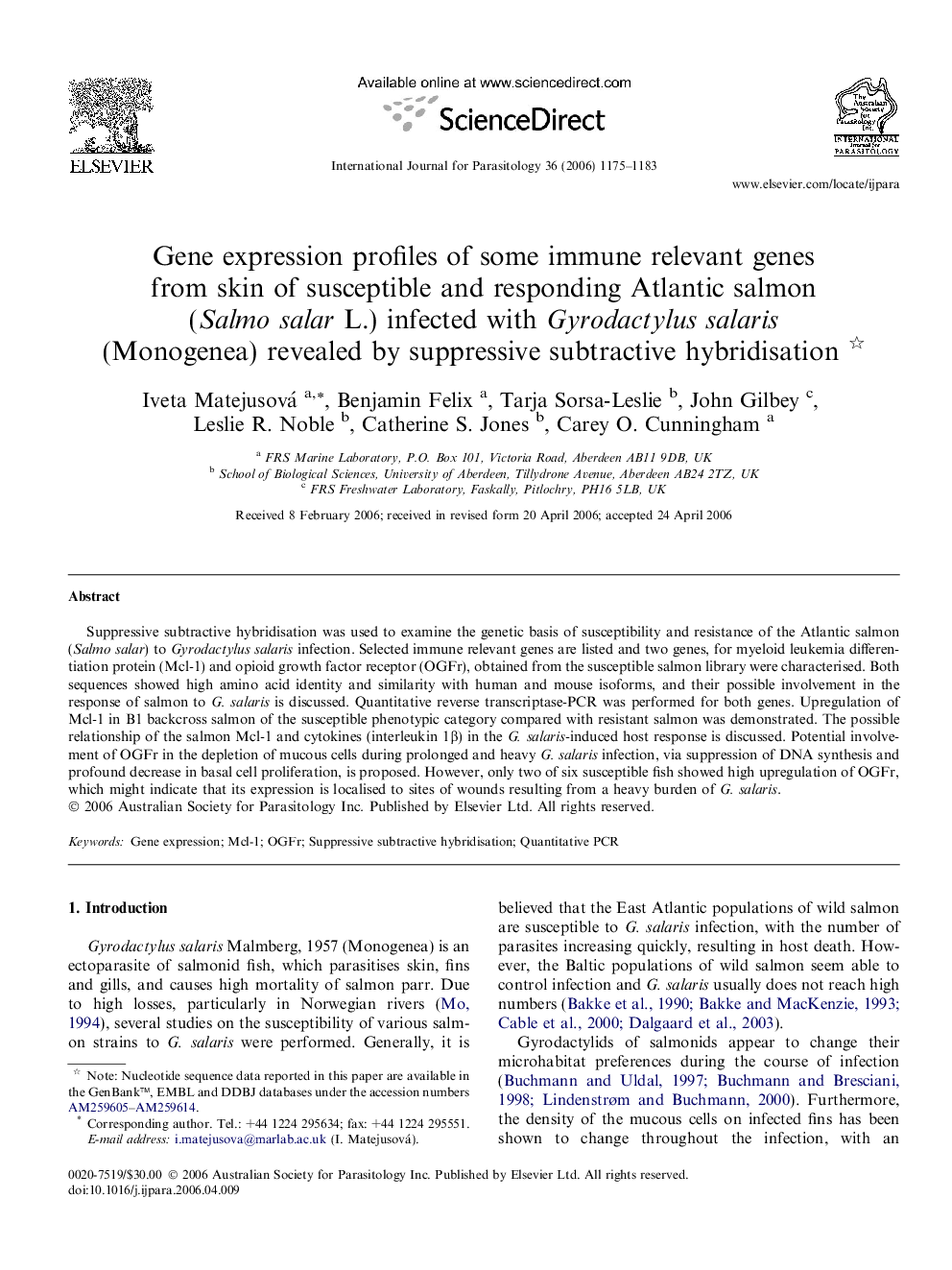| Article ID | Journal | Published Year | Pages | File Type |
|---|---|---|---|---|
| 2436552 | International Journal for Parasitology | 2006 | 9 Pages |
Suppressive subtractive hybridisation was used to examine the genetic basis of susceptibility and resistance of the Atlantic salmon (Salmo salar) to Gyrodactylus salaris infection. Selected immune relevant genes are listed and two genes, for myeloid leukemia differentiation protein (Mcl-1) and opioid growth factor receptor (OGFr), obtained from the susceptible salmon library were characterised. Both sequences showed high amino acid identity and similarity with human and mouse isoforms, and their possible involvement in the response of salmon to G. salaris is discussed. Quantitative reverse transcriptase-PCR was performed for both genes. Upregulation of Mcl-1 in B1 backcross salmon of the susceptible phenotypic category compared with resistant salmon was demonstrated. The possible relationship of the salmon Mcl-1 and cytokines (interleukin 1β) in the G. salaris-induced host response is discussed. Potential involvement of OGFr in the depletion of mucous cells during prolonged and heavy G. salaris infection, via suppression of DNA synthesis and profound decrease in basal cell proliferation, is proposed. However, only two of six susceptible fish showed high upregulation of OGFr, which might indicate that its expression is localised to sites of wounds resulting from a heavy burden of G. salaris.
